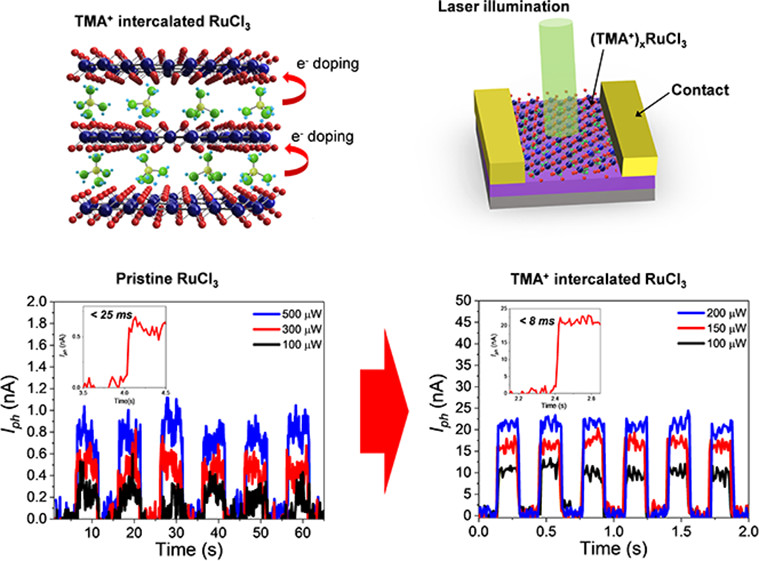Enhancement of Photoresponse on Narrow-Bandgap Mott Insulator α-RuCl3via Intercalation
-
Authors :
Min-kyung Jo, Hoseok Heo, Jung-Hoon Lee, Seungwook Choi, Ansoon Kim, Han Beom Jeong, Hu Young Jeong, Jong Min Yuk, Daejin Eom, Junghoon Jahng, Eun Seong Lee, In-young Jung, Seong Rae Cho, Jeongtae Kim, Seorin Cho, Kibum Kang, and Seungwoo Song
-
Journal :
Journal of the American Chemical Society
-
Vol :
15
-
Page :
18113-18124
-
Year :
2021

Abstract
Charge doping to Mott insulators is critical to realize high-temperature superconductivity, quantum spin liquid state, and Majorana fermion, which would contribute to quantum computation. Mott insulators also have a great potential for optoelectronic applications; however, they showed insufficient photoresponse in previous reports. To enhance the photoresponse of Mott insulators, charge doping is a promising strategy since it leads to effective modification of electronic structure near the Fermi level. Intercalation, which is the ion insertion into the van der Waals gap of layered materials, is an effective charge-doping method without defect generation. Herein, we showed significant enhancement of optoelectronic properties of a layered Mott insulator, α-RuCl3, through electron doping by organic cation intercalation. The electron-doping results in substantial electronic structure change, leading to the bandgap shrinkage from 1.2 eV to 0.7 eV. Due to localized excessive electrons in RuCl3, distinct density of states is generated in the valence band, leading to the optical absorption change rather than metallic transition even in substantial doping concentration. The stable near-infrared photodetector using electronic modulated RuCl3 showed 50 times higher photoresponsivity and 3 times faster response time compared to those of pristine RuCl3, which contributes to overcoming the disadvantage of a Mott insulator as a promising optoelectronic device and expanding the material libraries.
















